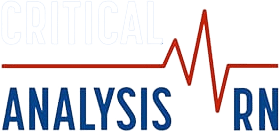Forensic nursing is a unique field that blends nursing skills with legal expertise, providing specialized care to victims of trauma while collecting and analyzing evidence crucial for judicial proceedings. With advancements in technology, forensic nursing practices have significantly evolved, introducing new tools that enhance the accuracy and efficiency of evidence collection and analysis.
Digital Documentation Tools
One of the primary technological advancements in forensic nursing is the use of high-resolution digital cameras and portable scanners. These tools are essential for the detailed documentation of wounds and other physical evidence, ensuring that the conditions of victims are accurately represented in legal proceedings. Digital documentation facilitates precise and immutable records, which are crucial for forensic analysis.
Alternate Light Source (ALS) Technology
Alternate Light Source (ALS) technology is another critical tool in the forensic nurse’s arsenal. It reveals evidence invisible to the naked eye, such as fibers, hair, and bodily fluids, which are often key in solving violent crimes, particularly sexual assaults. ALS devices utilize different wavelengths of light to uncover various types of evidence, making them versatile and invaluable in forensic examinations.
Biological Sample Collection Kits
Forensic nurses rely on specialized kits to collect biological samples like blood, semen, and saliva. These kits are designed to maintain the integrity of the samples from the scene to the laboratory. The advancement of DNA profiling has enhanced the value of these kits, enabling the identification of individuals from minute samples, thus playing a crucial role in criminal investigations.
Mobile Technology
The integration of mobile technology has transformed forensic nursing practices. Smartphones and tablets equipped with specialized applications allow for efficient on-site data collection and recording. These apps often feature checklists and templates to ensure comprehensive data collection and employ encryption to protect victim privacy.
Geographic Information Systems (GIS)
Geographic Information Systems (GIS) are emerging tools in forensic nursing that offer substantial investigative potential. GIS technology can map crime scenes and track injury patterns, providing insights into the nature of the crime and the behavior of the perpetrator. This technology is particularly useful in linking crimes and identifying patterns in serial offenses.
Wearable Technology
Wearable technology has become a significant tool in monitoring victims’ vital signs in real-time. Devices like smartwatches and fitness trackers provide data on heart rate, blood pressure, and stress levels, which are vital for assessing trauma and supporting victims’ testimonies with objective data.
Virtual and Augmented Reality
Advancements in virtual reality (VR) and augmented reality (AR) are revolutionizing training in forensic nursing. These technologies create immersive simulations of crime scenes, allowing nurses to practice evidence collection and interact with virtual evidence in a controlled environment. This hands-on approach enhances skill development without the logistical challenges of setting up real-world scenarios.
The continuous evolution of tools and technologies in forensic nursing not only enhances the capabilities of nurses in their roles but also significantly improves the reliability and effectiveness of the evidence collected. These advancements support the judicial process and increase the likelihood of achieving justice. As technology progresses, forensic nursing will likely gain even more innovative tools, further cementing its crucial role in linking healthcare with law enforcement.
Would you like to discuss your case? Just give me a call at (432) 661-3639 or email me today!
